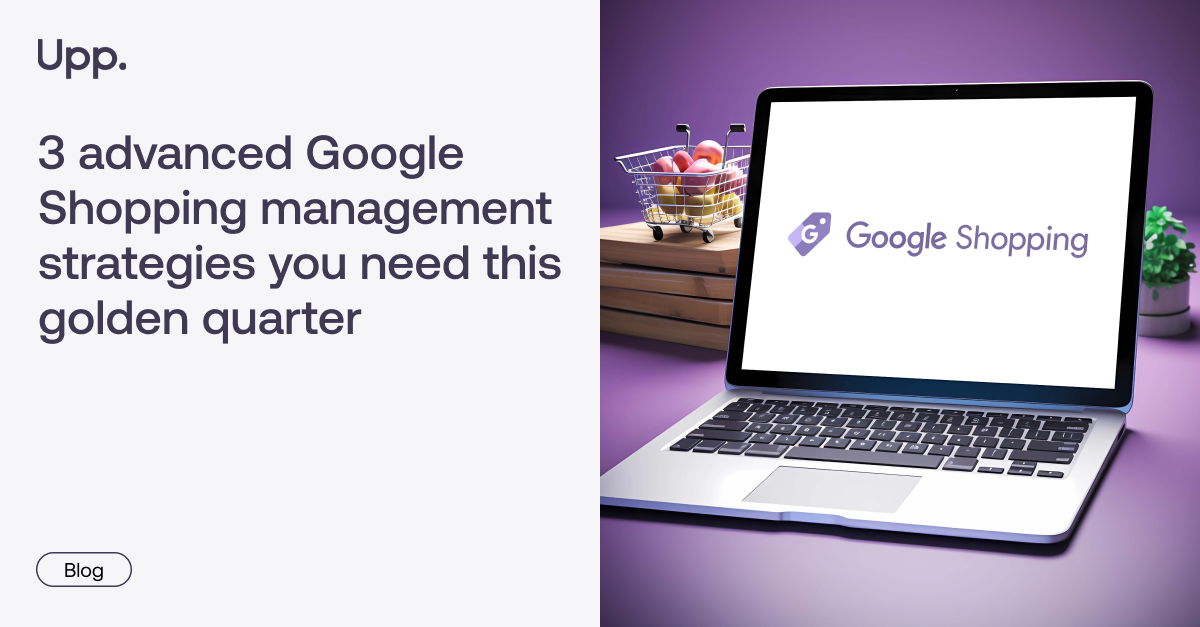How AI Can Supercharge Your Google Shopping Management in 2022
The online world can be a rewarding yet somewhat overwhelming platform for any retailer looking to both grow and survive. You have the benefit of being part of a constantly evolving landscape, with around 70% of Brits preferring to shop online, a number that’s higher than ever before.1
But the problem with a constantly evolving landscape is that you will always have to stay one step ahead of the game to keep your business thriving, and it can be a challenge to figure out how to do exactly that.
Take Google Shopping for example. While it’s an essential part of any online retailer’s selling strategy and accounts for 80% of retailers’ media budget with Google, the lack of insightful data it provides that you can use to optimise your campaigns leaves a lot to be desired.2 So how can you retain the foundational value that Google Shopping brings while also guaranteeing your business’ growth?
In this blog, we’re going to take you through what your Google Shopping management is missing and how you can introduce that missing piece to supercharge your strategy for the new year.
Google Shopping Management at a glance
First, let’s have a quick recap of the current state of affairs of the Google Shopping landscape and why it’s so important for online retailers. Google Shopping’s top listing products automatically appear on the front page of Google. By getting that coveted top listing, you’re already one step ahead of your competitors by positioning your products early on in your potential buyers’ journeys.
When it comes to the importance that a visible marketing campaign plays, the numbers speak for themselves. Our own research has found that 24-40% of existing ad spends generate little revenue while Return on Ad Spend (ROAS) thresholds can prevent almost 88% of products from being advertised.3
So the name of the game in Google Shopping is visibility of your products and campaigns to keep the cycle of revenue growth going. But the problem comes about when retailers looking to take their Google Shopping campaigns to the next level find themselves stuck on where to start.
What your Google Shopping Management is missing
Long story short, your Google Shopping management strategy is missing the all important detail of your retail performance data. While Google Shopping does provide data on high level metrics that can be useful, there is still a lot to be desired as it can only pull its insights from within its own ecosystem instead of considering the multiple other platforms that have a big influence on product performance insights. A product that may not be performing as well on Google Shopping may be achieving great metrics on your ecommerce store and other online platforms like Instagram and Facebook. That’s the kind of data point that would prove useful to retailers so that they know which products to push and test for back on Google Shopping to achieve Return on Ad Spend (ROAS) and grow GMV.
This all ties into the potential never ending cycle of low visibility of your product range leading to low conversion and ROAS. For example, while Google registers and promotes all products on its platform, this promotion and visibility inevitably withers over time as Google starts to calculate which specific products and campaigns perform the best and focuses its promotions on those particular category subsets. So while in theory all of your available products are still being promoted by Google, it’s not enough to guarantee the level of visibility that they need and even less so for the long term, limiting your overall performance and success as a retailer.
Why automation and AI is essential to achieving sustainable growth
To achieve accurate retail data metrics and then efficiently incorporate them into your Google Shopping Management strategy, you need the right form of automated artificial intelligence software.
While using an agency or hiring in-house specialists can be helpful in terms of providing on the ground expertise, you will soon find yourself falling short in the level of productivity and growth you can achieve. Inevitable issues that would arise include limits on the level of deep insight they can provide due to vast data sets — which change daily — as well as time lost on formalities like forming a partnership and typical working hours. Your customers are able to shop 24/7 so it doesn’t make commercial sense to restrict your Google Shopping Management to working hours.
An AI-driven insights platform, on the other hand, can be used alongside your existing campaign strategies to achieve truly supercharged performance. Upp works around the clock to analyse several key data points, including insights from Google Shopping’s ecosystem, to identify opportunities for growth and optimisation
Why Upp is the solution
Upp has long recognised the important role that retail data plays in figuring out how to optimise your product and market performance. That’s why we developed our intelligent, third party Google Shopping optimisation platform to do the heavy data collation work for you so that you can focus on how to incorporate our findings into your strategies.
Upp works by combining key business metrics such as ROAS, GMV, and Spend with product performance data, trend data, and expert know-how of Google Shopping to optimise your campaigns to continuously maximise profitability and growth. Upp acts as the platform that enables you to fill in the data gaps by allowing you to understand your product performance and campaigns as they stand — Upp then automatically executes the improvements to your campaigns. The intelligent and automated nature of our platform guarantees that you will always have real-time insights that are relevant to your business, acting as a safety net while the ecommerce world continues to change and grow.
Want to see for yourself how Upp can take your Google Shopping management to the next level? Get a free consultation with one of our experts today and get hard hitting insights into your campaigns and products within the span of only 30 minutes!
1. More Brits prefer online shopping since pandemic | Reuters
2. 9 Important Google Shopping Ads Benchmarks (2022) | Store Growers



